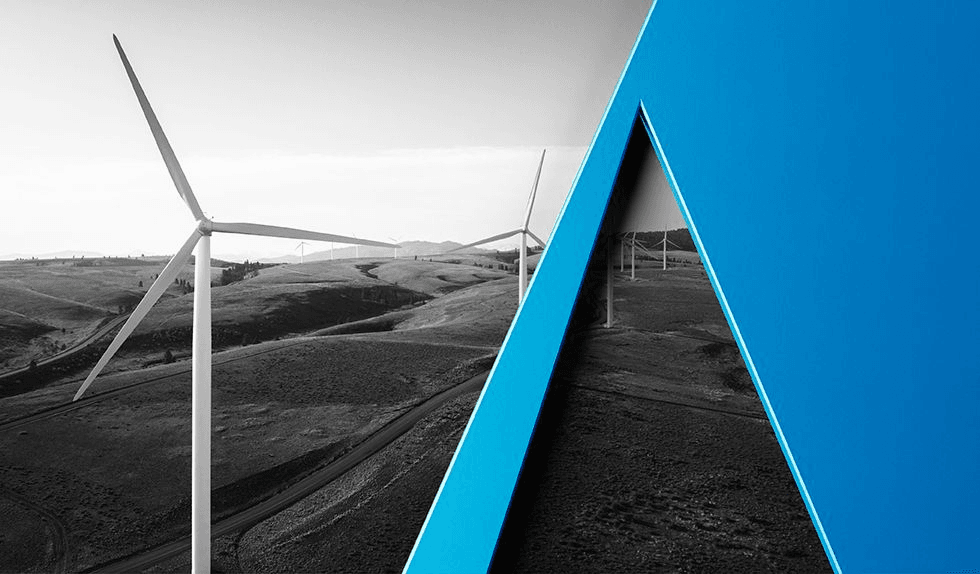Last month over 35,000 participants attended the Gastech 2019 Conference, the world’s largest gas and LNG conference, in Houston, Texas. Members of Akin Gump Strauss Hauer & Feld LLP’s global energy and transactions team attended Gastech and wanted to share the following observations:
What message resonated most from Gastech 2019?
There is one general theme heard throughout Gastech: Worldwide the economy and its influences, such as energy needs, societal considerations, and transportation fuels, are in transition—and liquefied natural gas (LNG) is the key to that transition. This message focused on two central tenants: (1) LNG is vital to the energy demands in both the U.S. and the rest of the world and (2) LNG companies are increasingly focused on evaluating and addressing the environmental impacts on their operations. We heard these themes repeatedly from representatives of major publicly traded companies, private-equity backed developers and government representatives.
It is clear that the industry understands that the emphasis on greener methods of power generation, transportation and project development and evaluation are here to stay. However, there is an acknowledgment that technological and practical constraints exist that will require the continued use of hydrocarbons—especially natural gas—for the foreseeable future. The world needs affordable and reliable energy even when the sun does not shine and the wind does not blow and until technologies such as battery storage and carbon sequestration mature and become more economical, natural gas is the most readily available and economic tool that we have to make an immediate reduction in the amount of carbon emitted in the near future.
What are some potential growth markets for U.S. LNG and what are the near-term challenges or considerations impacting this growth?
The U.S. is currently the third largest exporter of natural gas in the world and is expected to become the leading exporter of natural gas by the mid-2020s. As such, the U.S. is well positioned to supply markets in South America and Europe that are in need of a stable incremental supply of natural gas as they transition the sources of fuel for their power generation needs.
This growth is not without potential challenges, particularly for those “second wave” of U.S. LNG projects. Tariffs on Chinese exports, competition from alternative energy sources (including pipeline gas), project start-up delays due to engineering, procurement and construction (EPC) contractor issues and compression in the spread between Henry Hub and global gas and LNG prices are a few of the more significant near-term concerns. New project models have the potential to address some but not all of these challenges.
One example of the impact on the growth of the U.S. LNG infrastructure is the demand for LNG from Asian buyers.
With 76 percent of global LNG demand coming from Asia in 2018 (up 3 percent from 2017), there is no doubt that Asian buyers are already the dominant force in shaping LNG demand worldwide. In 2018, Asian LNG imports grew 13 percent with 52 percent of U.S. exports delivered to Asia. China will continue to be a major driver of LNG-demand growth as its domestic supply and pipeline flows will be insufficient to meet rising demand. Having imported 54 MT in 2018 (a 100 percent increase over 2016-2018), China will soon overtake Japan as the largest LNG importer globally and some suggest that China will represent 50 percent of all global demand growth. Similarly, India (the potential next largest importer of LNG after China), Bangladesh, Pakistan and South East Asia (Vietnam, Philippines and Thailand) will all rely on LNG to meet a growing demand to replace declining domestic supplies and displace coal as the dominant fuel for power generation needs. To meet this increasing demand, there is a belief that approximately 250-300 MT of new supply (in addition to the over 150 MT of capacity already online or excepted to come in line over the next four years) will be necessary.
Access to cheap shale gas means the U.S. is well placed to meet this demand but competing projects in Canada, Russia, Africa, the Middle East and Australia, along with other issues such as tariffs on Chinese exports (as noted above) which are impacting U.S. supply into China, present serious challenges to the perceived advantage of U.S. LNG.
On top of this, it will be a challenge to finance the investment of hundreds of billions of U.S. dollars of the investment in U.S. gas infrastructure (both pipeline and liquefaction) to support the development of the “second wave” of U.S. LNG projects at a time when many financial institutions and other major investors appear to be tempering their enthusiasm for investing in traditional energy infrastructure at the exact time when an infusion of capital is needed the most.
Are there any potential new project models or pricing considerations that could help spur project development both in the U.S. and overseas?
Yes, there are many new models under consideration and already being implemented.
Some U.S. developers are currently structuring projects under an “integrated model” pursuant to which LNG buyers are invited to partner with the developer in the ownership of upstream, midstream and/or liquefaction assets as opposed to a model that prices United States LNG in relation to pricing from Henry Hub price (merchant model) or requires LNG buyers to source their own feed gas (tolling model).
Companies are also pursuing LNG netback pricing transactions pursuant to which LNG/gas buyers source gas not at an index-price but global gas/LNG price less certain costs. These transactions are attractive to gas producers/sellers due to the potential to sell gas production at a higher price than the local market price while LNG/gas buyers find these transactions attractive as a means by which to source feed gas at a price lower than Henry Hub. However, such arrangements require significant negotiated contractual and legal protections to ensure each party can appropriately access the price benefits of the “netback” price arrangement.
Some “second wave” developers in the United States are also selling U.S. LNG at Brent or Japan/Korea Maker (JKM) prices. Other models, such as the shared revenue model, have also been discussed in connection with U.S. LNG projects. Interestingly enough, outside the U.S., where many LNG projects operate under the “integrated model,” there appears to be an interest in de-aggregating projects or moving towards the tolling model that dominated the first wave of LNG exports in the U.S.
Are there any practical concerns over the energy policies being espoused in the current U.S. election cycle?
There are many and the gas/LNG industry, and the energy industry in general, is at an inflection point in addressing the myths asserted by certain anti-gas political pundits. For example, under the guise of addressing global warming, some are calling for a ban on fracing. However, a ban on fracing will invariably cause other countries, such as China, to rely more heavily on coal and other fuels (with a higher carbon footprint) and that would be a substantial step back for the environment. The technology associated with gas fired power is also continuing to improve while “clean coal technologies” seem to have stalled in their development, so any incentive to continue or expand coal usage would appear counterproductive from an environmental perspective.
If the United States effectively banned fracing, domestic and global prices for energy in general will likely increase substantially and that would be disastrous for most countries in the world, especially the United States where millions enjoy a better standard of living today and a cleaner environment due to an abundance of natural gas. To say nothing of the catastrophic effects such actions would have on the global economy, the United States would once again become energy dependent, geopolitical risk would increase around the globe, and weather, such as hurricanes, would have a more substantial impact on energy prices and the risk of frequent blackouts in the United States’ biggest cities would likely rise.
It is also interesting to note that the narrative in the industry is actually quite climate conscious. The reality is that LNG is far cleaner than coal and fuel oil from an energy generation perspective, even when used as a base load power source. However, the industry often refers to LNG as a “transition fuel.” That is, it is a cleaner fuel source than coal and oil but viewed as bridge fuel to help the transition to cleaner energy generation technologies heralded by renewables (backed by better storage solutions to ensure cost effective, reliable base load, e.g., batteries), the emerging hydrogen economy or other more technologically nascent solutions such as fusion. The transition to that future will take time and LNG is a far friendlier fuel from a climate perspective in the interim. As a side note, oil and gas are also the backbone of the petrochemicals industry so discussing bans on fracing as a means of reducing oil and natural gas used in power generation will reduce the supply of oil for the petrochemicals industry, meaning increased feedstock prices. No doubt that will likely cause even more far-reaching cost pressures than just rising prices for motor vehicles due to the sheer volume of everyday products used around the world produced by the petrochemicals industry.
Are there any perceived or actual parallels between how certain U.S. state governments are attempting to stall LNG projects and the same from certain Asian and European governments?
At the U.S. state level, it seems that stakeholder engagement around environmental issues (and local level political support) and permitting are the main drivers behind U.S. state attempts to stall development of certain U.S. projects (i.e., the Jordan Cove project in Oregon).
Dealing with permitting at both a national and local government level will always take time and the success of a project will fundamentally depend on whether local governments (whether that be a U.S. state government or local government in an Asian or European gas import country) is supportive of the project. There is always the potential for misalignment between national/federal energy policy and the support of local/regional governments. In addition to general political support, there must be in place a regulatory framework and political stability that fairly and transparently screens and approves projects for development. Unlike the U.S., it is often this lack of regulatory framework or certainty in new import countries that is the initial cause of delay in developing import projects in Asia and in other parts.
What should companies and other stakeholders in the natural gas and LNG industry be most excited to monitor until Gastech 2020?
Like they always have, many political factors such as the 2020 U.S. election cycle, tensions in the Persian Gulf, the public perception of exploration & production activities, and political events in places like Argentina and China will continue to greatly influence the energy industry. However, the natural gas and LNG industries are well poised to provide the world with a lower-carbon source of power as societies and economies transition away from coal and oil while continuing to explore exciting new transportation and industrial applications for LNG as well as potential technological disruptions with respect to battery storage, industrial and commercial uses of hydrogen, and carbon capture and sequestration.
See everyone in Singapore next year!



